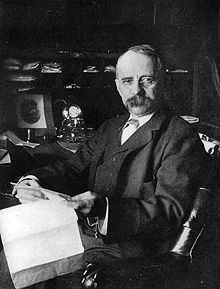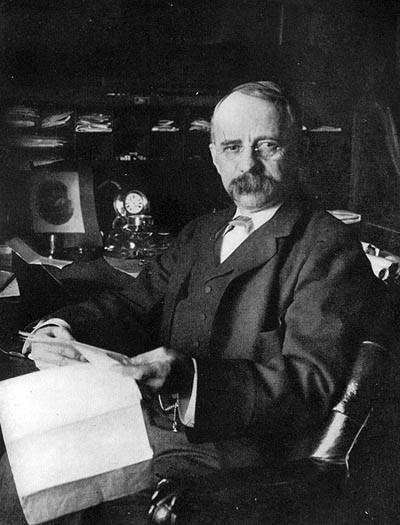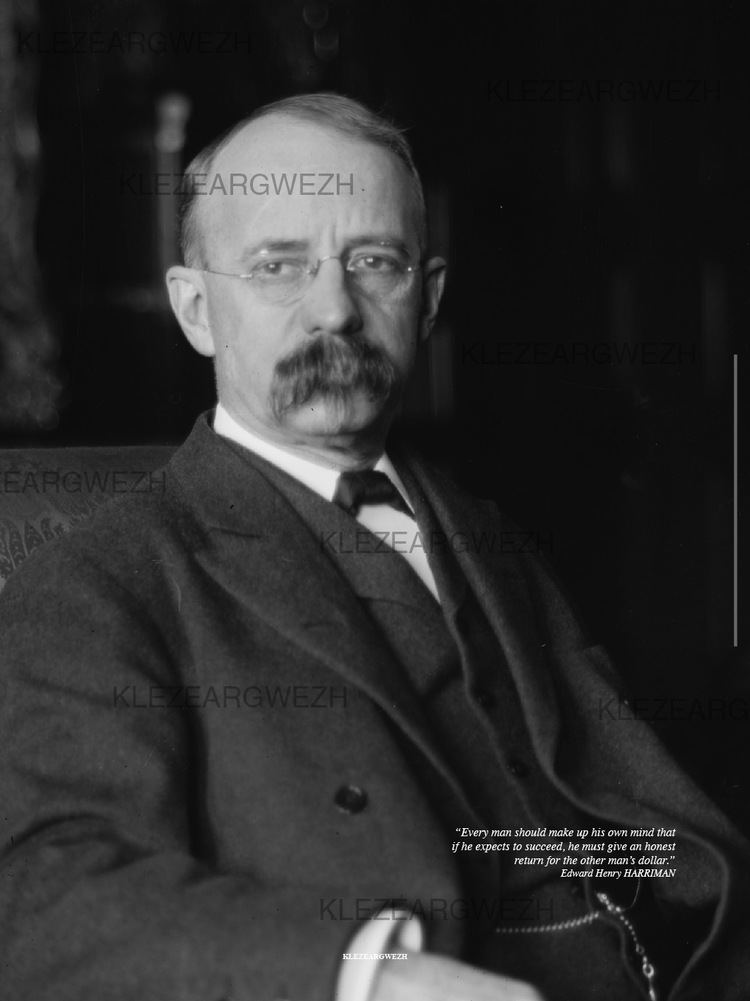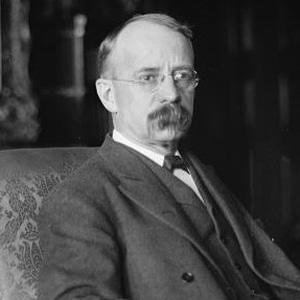Occupation Railroad executive Name E. Harriman | Role Executive Siblings Orlando Harriman Jr. | |
 | ||
Full Name Edward Henry Harriman Born February 20, 1848 ( 1848-02-20 ) Hempstead, New York, US Spouse Mary Williamson Averell (m. 1879) Children W. Averell Harriman, E. Roland Harriman Parents Cornelia Neilson, Orlando Harriman Sr. Similar People W Averell Harriman, E Roland Harriman, Mary Harriman Rumsey, Mary Williamson Averell, Pamela Harriman | ||
Edward Henry "Ned" Harriman (February 20, 1848 – September 9, 1909) was an American railroad executive.
Contents
- Early life
- Career
- The Harriman Alaska Expedition
- Interest in ju jitsu
- Personal life
- Harriman estate
- Award
- Namesakes
- Places built using funds donated from his sponsorship or estate
- Notable quotations
- In popular culture
- References

Early life

Harriman was born on February 20, 1848 in Hempstead, New York, the son of Orlando Harriman, Sr., an Episcopal clergyman, and Cornelia Neilson. He had a brother, Orlando Harriman, Jr. His great-grandfather, William Harriman, had emigrated from England in 1795 and engaged successfully in trading and commercial pursuits.

As a young boy, Harriman spent a summer working at the Greenwood Iron Furnace in the area owned by the Robert Parker Parrott family that would become Harriman State Park. He quit school at age 14 to take a job as an errand boy on Wall Street in New York City. His uncle Oliver Harriman had earlier established a career there. By age 22, he was a member of the New York Stock Exchange.
Career
Harriman's father-in-law was president of the Ogdensburg and Lake Champlain Railroad Company, which aroused Harriman's interest in upstate New York transportation. In 1881, Harriman acquired the small, broken-down Lake Ontario Southern Railroad. He renamed it the Sodus Bay & Southern, reorganized it, and sold it to the Pennsylvania Railroad at a considerable profit. This was the start of his career as a rebuilder of bankrupt railroads.
Harriman was nearly 50 years old when in 1897 he became a director of the Union Pacific Railroad. By May 1898, he was chairman of the executive committee, and from that time until his death his word was law on the Union Pacific system. In 1903, he assumed the office of president of the company. From 1901 to 1909, Harriman was also the President of the Southern Pacific Railroad. The vision of a unified UP/SP railroad was planted with Harriman. (The UP and SP were reunited on September 11, 1996, a month after the Surface Transportation Board had approved their merger.)
At the time of his death Harriman controlled the Union Pacific, the Southern Pacific, the Saint Joseph and Grand Island, the Illinois Central, the Central of Georgia, the Pacific Mail Steamship Company, and the Wells Fargo Express Company. Estimates of his estate ranged from $150 million to $200 million. It was left entirely to his wife.
The Harriman Alaska Expedition
In 1899, Harriman sponsored and accompanied a scientific expedition to catalog the flora and fauna of the Alaska coastline. Many prominent scientists and naturalists went on the expedition, aboard the luxuriously refitted 250-foot (76 m) steamer George W. Elder.
Interest in ju-jitsu
Harriman became interested in ju-jitsu after his two-month visit to Japan in 1905. When he returned to America, he brought with him a troupe of six Japanese ju-jitsu wrestlers, including the prominent judokas Tsunejiro Tomita and Mitsuyo Maeda. Among many performances, the troupe gave an exhibition that drew six hundred spectators in the Columbia University gymnasium on February 7, 1905.
Personal life
In 1879, Harriman married Mary Williamson Averell, daughter of William J. Averell, a banker in Ogdensburg, New York. Together they had:
Harriman died on September 9, 1909 at his home, Arden, at 1:30 p.m. at age 61. Naturalist John Muir, who had joined him on the 1899 Alaska Expedition, wrote in his eulogy of Harriman, "In almost every way, he was a man to admire." Harriman was buried at the St. John's Episcopal Church cemetery in the hamlet of Arden, near his estate.
Harriman estate
In 1885, Harriman acquired "Arden", the 7,863-acre (31.82 km2) Parrott family estate in the Ramapo Highlands near Tuxedo, New York, for $52,500. Over the next several years he purchased almost 40 different nearby parcels of land, adding 20,000 acres (81 km2), and connected all of them with 40 miles (64 km) of bridle paths. His 100,000 sq ft (9,300 m2) residence, Arden House, was completed only seven months before he died.
In the early 1900s, his sons W. Averell Harriman and E. Roland Harriman hired landscape architect Arthur P. Kroll to landscape many acres. In 1910, his widow donated 10,000 acres (40 km2) to the state of New York for Harriman State Park. The estate was designated a National Historic Landmark in 1966.
Award
Namesakes
Places built using funds donated from his sponsorship or estate
Notable quotations
"Much good work is lost for the lack of a little more."
"Cooperation means 'Do as I say, and do it damn quick.'"
